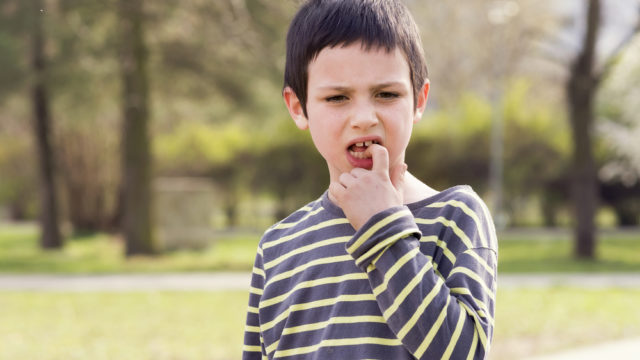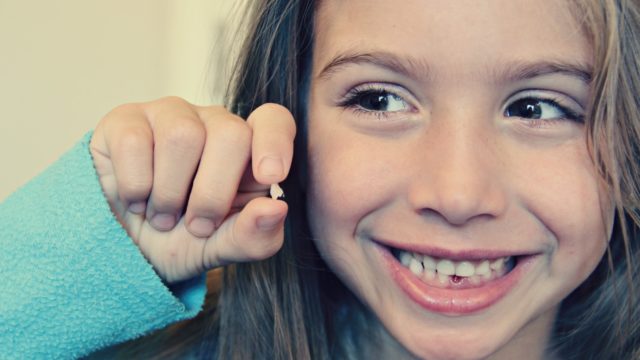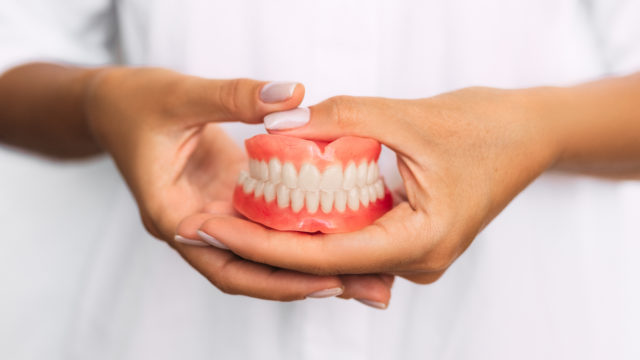
Article at a Glance
- Kids usually will have their first loose tooth around age 6 or 7.
- The first loose tooth will usually be the first one that came in, typically the bottom front teeth or top front teeth.
- Explaining what is happening to your kids and letting them know what to expect will help ease concerns.
- Be excited and supportive about your child’s wiggly tooth. Teach them how to care for it so the tooth can fall out naturally.
- There are some circumstances where you may need to consult your dentist to help with a loose tooth, like signs of infection or trauma.
- Reinforce good oral care habits as your child loses teeth and the permanent teeth come in.
Loose teeth in children can be a fun bonding experience for parents. Those toothless photos are priceless and there’s also the excitement of tooth fairy visits! That first loose tooth can be a bit overwhelming for you and your child if you’re not prepared. From what to expect to how to pull a loose tooth, we’ve got the answers you need!
When to Expect Loose Teeth
Just like cutting teeth, kids begin losing baby teeth at different times though usually around age 6 or 7. They will also generally lose their baby teeth in the same order they came in – starting with the front bottom or top teeth.
Explaining Loose Teeth to Children
Loose baby teeth can be a source of pride, curiosity, or even concern in kids, so it’s important to be prepared as a parent. How will you handle your child’s first loose tooth?
Aside from introducing the amazing, generous tooth fairy, it’s a good idea to explain to your kids what is happening and what they can expect. Many kids will be afraid to eat or fear pain, so reassurance is key for the first loose tooth. Some kids may be embarrassed by the hole left behind, so try to reinforce that it’s temporary and something every kid goes through. As parents, those toothless pictures may be some of the most priceless in your album!
What to do (and not do) When Your Child Has a Loose Tooth
When your child comes to you with a loose tooth, they are looking to you for guidance. We’ve compiled list of dos and don’ts for parents dealing with loose teeth in children.
- Do be excited and share your excitement with your child.
- Don’t try to yank the tooth out right away.
- Do encourage your child to keep wiggling the tooth to loosen it until it falls out naturally.
- Don’t forget to wash your hands if you are going to help work the tooth out and urge your child to wash their hands before wiggling the loose tooth.
- Do try to let the tooth fall out naturally, even if it takes a little wiggling. This is the best way to limit pain, bleeding, and risk of infection.
- Don’t ignore your child if they are in a lot of pain. There could be something wrong and you should contact their dentist immediately.
How to Remove a Loose Tooth
Wiggly teeth can be fun to play with, but sometimes they can bother your child. While it is best to let a tooth fall out naturally, at some point, parents may need to know how to remove loose teeth.
- Try chewing on hard foods like apples and carrot sticks.
- Wiggle the tooth with clean fingers or your child can move it with their tongue.
- Use gauze or a clean tissue to wiggle the tooth and attempt to remove it.
There are some instances where it’s best to contact your dentist for help in removing the loose tooth. Even though it’s best for teeth to come out naturally, there are some unique circumstances that may require professional assistance.
- If your child’s loose tooth was knocked out traumatically, like a fall on the playground or in a sports competition. There could be tooth fragments that need to be removed.
- If there are symptoms of an infection around the loose tooth, contact your dentist immediately.
- If a tooth is loose early or out of sequence with the other teeth, you may want to contact your dentist to have your child checked out.
Reinforcing Good Oral Care Habits
Loose baby teeth also signal you to reinforce good oral care habits. When your child loses a baby tooth, it means their permanent, adult teeth will be coming in and you definitely want them to last a lifetime. Make sure your child is brushing their teeth at least twice per day and using proper techniques.
Good oral care habits also include regular trips to the dentist. Children should start seeing a dentist by age 1, but it’s important to stick with visits every six months for check-ups and professional teeth cleanings. Your dentist can help reinforce good oral care routines and check for any signs of problems as your child loses baby teeth.
If your child is due for a check-up, contact the Jefferson Dental Care clinic nearest you to make an appointment.




